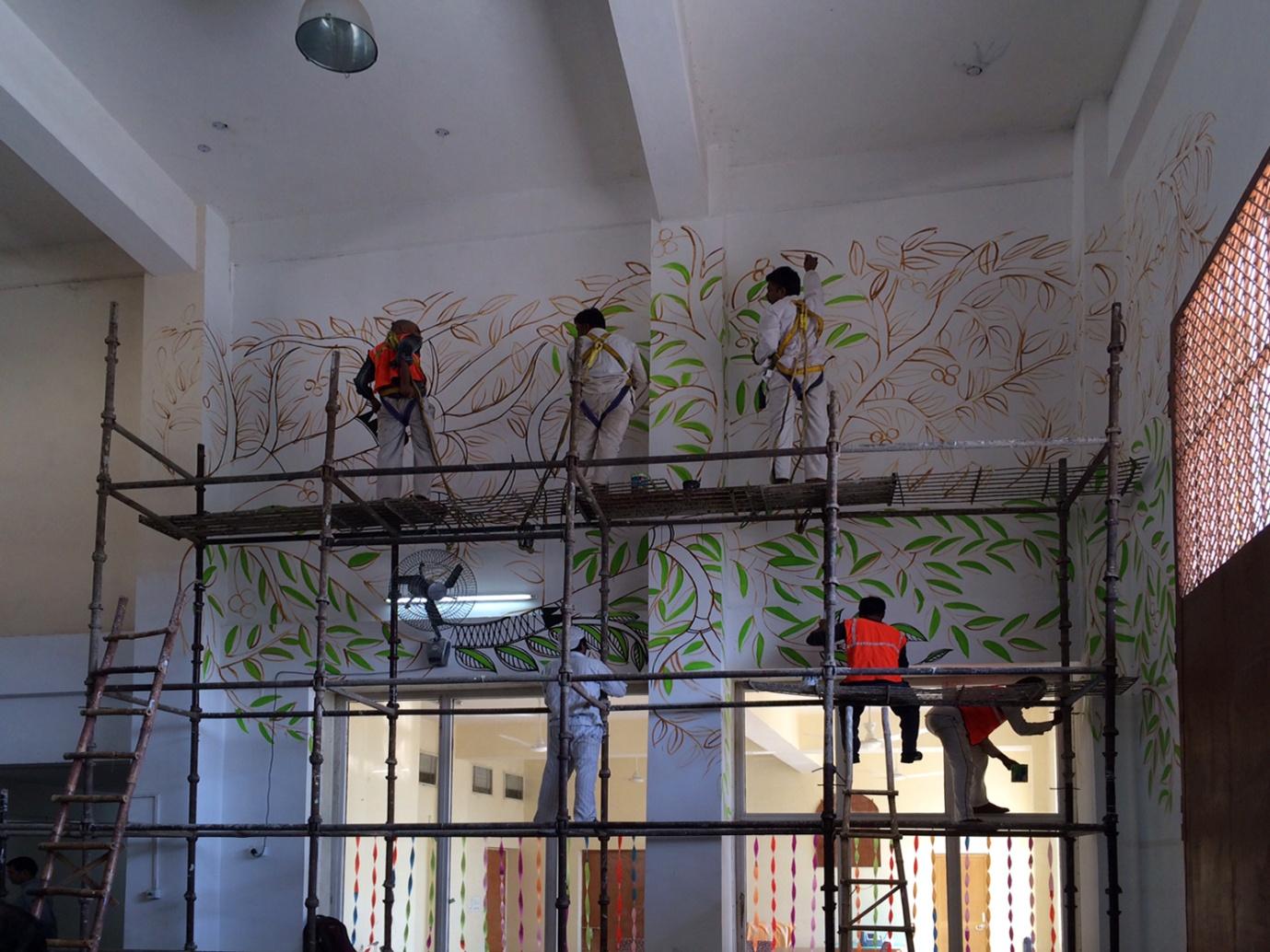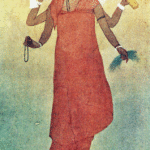Involving prison inmates in vocational and creative opportunities can help them in their rehabilitation in society. In a unique move, certain inmates of Tihar Jail, along with artists from a Delhi initiative, got a chance to paint their new prison accommodation, Mandoli Jail No. 14.
The project, along with two similar ones at Narela and Baprola, were conceived to ease the pressure off the central jail in Tihar, which is forced to accommodate nearly 13,000 inmates despite a sanctioned capacity of 6,250. The Mandoli Jail complex, spread over 68 acres in northeast Delhi, has six different jails for different categories of inmates.
Towards the end of 2016, authorities at Tihar Jail were getting ready to finally ease the burden of overcrowding and move some of the inmates to a newer prison facility getting ready across the Yamuna river. This new facility was Mandoli Jail, spread across 68.4 acres of land in East Delhi. While the jail is designed to house over 3,000 inmates, the first batch of 500 were moved to this new facility under tight security towards the end of the year.
To solve the issue of overcrowding in Tihar Jail, the jail authorities build the Madoli Jail in December 2016. Spread across 68.4 acres in East Delhi, this jail, designed to house over 3,000 inmates, has got a new look. The inmates of Mandoli Jail and artists of Delhi Street Art (DSA) have transformed the walls of Mandoli Prison by painting them using Madhubani tribal art forms
When these inmates arrived at Mandoli, they were greeted by a new, clean, and spacious facility, where several artists were already working hard in their endeavour to turn the jail into a virtual public art gallery.

Madhubani style artwork on display in the walls of the jail
According to Yogesh Saini, Founder of DSA, “We had several meetings with the prison authorities to discuss design ideas for the buildings. The DDirector-General Delhi Prisons, Mr. Sudhir Yadav, particularly liked the design utilizing tribal art forms, and finally we zeroed down on a Madhubani-style composition.”
The scenes on the exterior walls of the jail show a mixture of nature elements like the tree of life, animals, birds, fruits, flowers, etc. While several deer can be seen all along the nearly 300-feet length of the prison walls, the main dodhy (entrance) gate depicts a peacock perched right on top of the imposing metal gates.

Overview of the outside walls of the jail done by its inmates
It was a strong desire of the DG to involve selected inmates in the creation of the art at Mandoli, and some of the inmates who had recently moved from Tihar joined the DSA team to create the wall art. They already had demonstrated the desire and skills to work in creative projects.
Given the security concerns, however, the inmates and DSA could only work together on the interior walls of the Deodhy, as well as the buildings inside the prison building, housing the canteen and the NGO office. The walls of the Deodhy continue to display the Madhubani art form, and the tree of life extends from the outside to the inside and towards the passages of the building.
According to Saini, “The Madhubani art at Mandoli is the single biggest creation of this tribal art form in any one location. It covers nearly 12,000 sq. ft., and has a lot of attention to detail and a desire to stay true to the traditional elements of the art form.”
The DSA team comprised of 15 artists, and a small team of inmates joined them for a part of the wall art effort that stretched over eight weeks. Given that the artists did a lot of work at heights above 10 feet, they used scaffolding and ladders. They also gave special attention to safety, including use of safety vests and harnesses. Artists and inmates climb high to create wall designs.
While some inmates had rudimentary experience with wall art, this was their first time with such a large effort. None of them had previously worked above ground level. Security was very tight throughout, and all the artists underwent multiple checks before entering or leaving any sensitive areas. According to Mr. Yadav, DG, Prisons, “We are undertaking initiatives to make Mandoli one of India’s most beautiful jails, perhaps the world’s. We want the inmates and their family members who come to visit them to have a positive experience.
Hopefully, this will encourage them to further hone their skills and become better citizens.” At present, the Mandoli jail only houses men; however, in the coming weeks, a jail for women, and a juvenile center, will also become operational. Some inmates will complete their sentences soon, and they are very keen to restart their lives on a creative track. For the DSA team of artists, this was another unique experience. Their previous large public art projects included Shankar Market Complex at Connaught Place, Kavi Nana Flyover in Ahmedabad, etc.

The motive of the project is to beautify the prison walls and also make it a life-changing experience for the prisoners. “The purpose behind the initiative is to hone the skills of inmates and encourage them to become better citizens. With colourful walls around, it will also create a positive environment for them,” adds Deepak Saini.
Artist Rahul Kumar says, “I had never visited a jail before and had no idea what it would be like. But this turned out nothing like I would have imagined. Working with inmates was a different experience altogether as some of them were really talented, friendly and willing to work hard with us.”



What do you think?